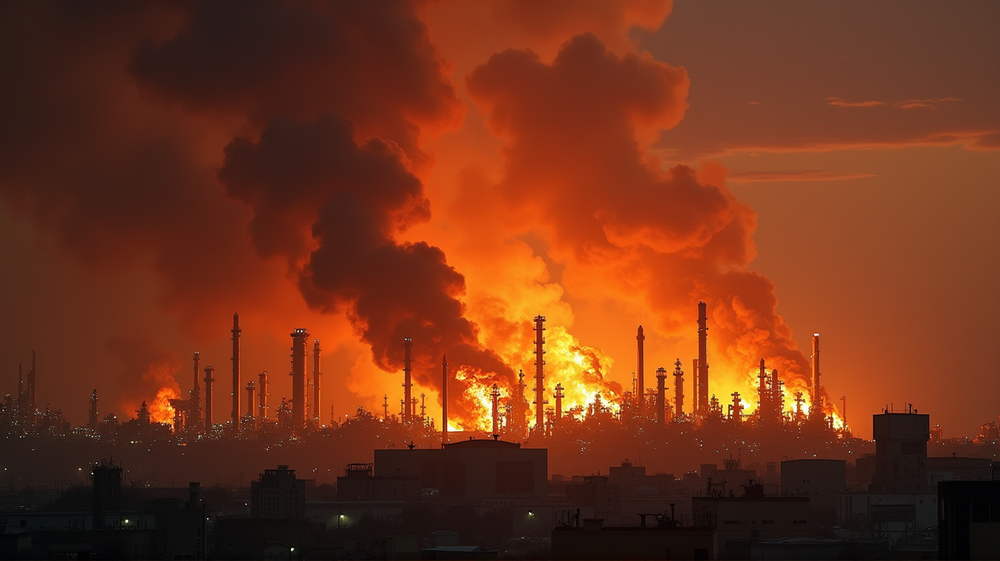In a dramatic escalation, smoke filled the skies over Tehran as energy has become the latest battleground in the ongoing conflict between Israel and Iran. As the tension simmers across the Middle East, the stakes have been raised with attacks on Iran’s critical fuel and gas infrastructure.
Energy as the Latest Frontline
Israel’s strategic assaults on Iran’s energy facilities mark a significant shift in the conflict. Tehran, bearing the scars of longstanding economic sanctions, finds its beleaguered energy sector thrust into the spotlight. Millions watch as fuel tanks blaze and gas processing plants are targeted, prompting volatile swings in global oil markets.
Ripple Effects on Global Energy Markets
The attacks reignited chaos in global energy markets, sending Brent crude prices up by 5.5% temporarily. The stakes are high, with the region providing a significant chunk of the world’s oil. Iran, rich in reserves yet plagued by supply interruptions, now finds its domestic stability tested under the strain of both external and internal pressures.
Pressure Beyond Borders
The conflict’s impact extends far beyond the Middle East. The UK and other global economies watch anxiously as the situation unfolds, wary of the inflationary threats posed by climbing crude prices. “The impact on the region and on global markets is immense,” UK Chancellor Rachel Reeves noted. As energy prices respond to geopolitical tensions, the world braces for potential ripple effects on economic stability.
Strategic Tactics and Regional Implications
Israel’s calculated strikes on Iran’s dual-use depots—serving both civilian and military ends—aim to weaken its opponent’s internal cohesion. However, the implications of targeting such infrastructure extend across the Middle East, drawing comparisons to past military tactics and international legal precedents. Israel’s actions signal a broader strategy to destabilize Iranian leadership, echoing previous military playbooks.
Iran’s Calculated Response
In retaliation, Iran has targeted Israeli infrastructure, notably a significant oil refinery in Haifa. The attack underscores Iran’s capacity and willingness to react when provoked, harkening back to its responses under previous pressures. Despite recent diplomatic thawing with Gulf neighbors like Saudi Arabia, Iran is unlikely to shy away from leveraging its strategic capabilities if local and regional tensions boil over.
Looking Ahead
With the oil market steadily supplied for now, traders remain on edge, wary of further escalation. Observers are keenly watching the Strait of Hormuz, a critical chokepoint for global oil and gas shipments. Its fate, amidst the region’s evolving dynamics, could yet shift dramatically given the historical context of Iran’s military strategies and the ever-changing technological landscape.
As these landscape-defining energies interact in the region, the world watches closely, aware that today’s local conflicts hold global consequences. The path ahead remains fraught with peril and possibility in equal measure.












